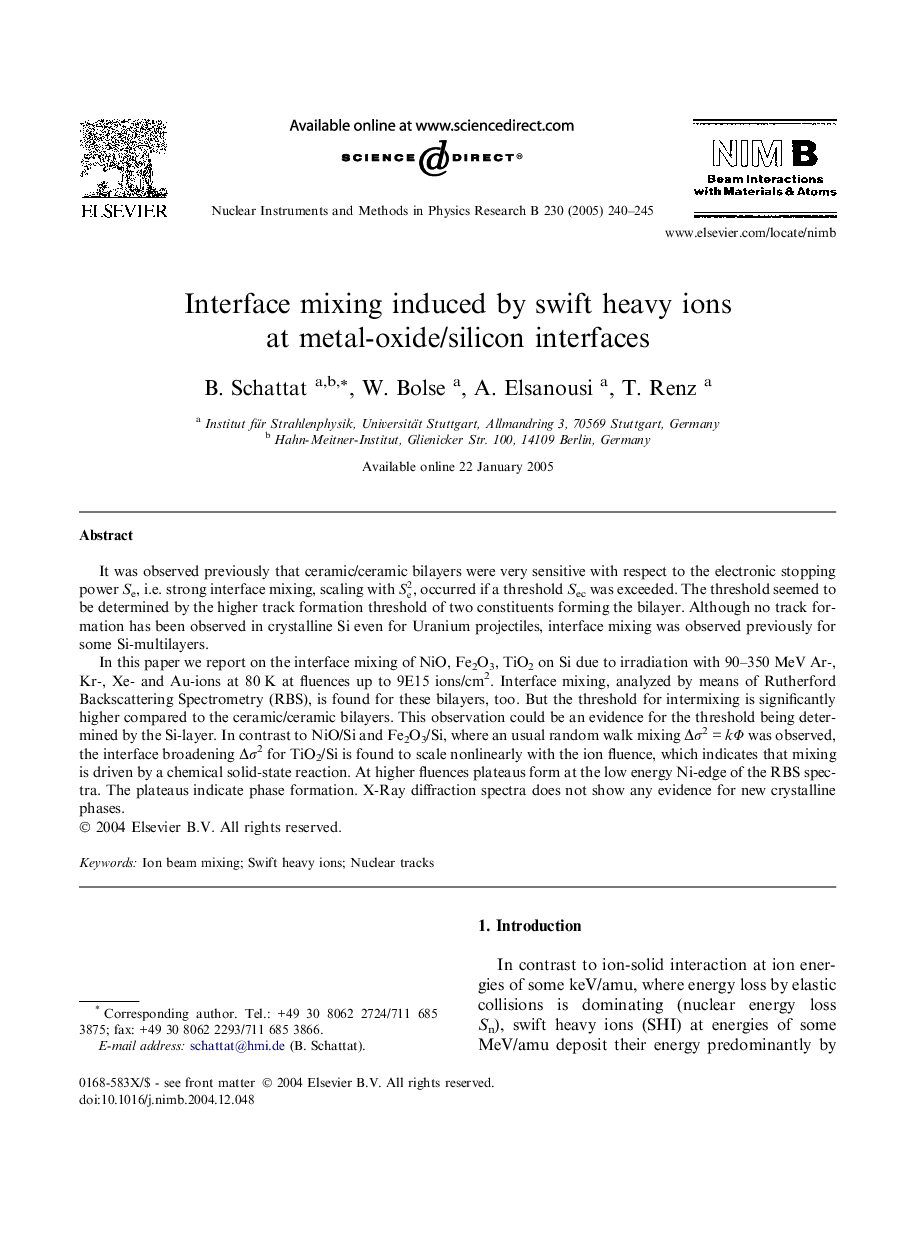| Article ID | Journal | Published Year | Pages | File Type |
|---|---|---|---|---|
| 9818287 | Nuclear Instruments and Methods in Physics Research Section B: Beam Interactions with Materials and Atoms | 2005 | 6 Pages |
Abstract
In this paper we report on the interface mixing of NiO, Fe2O3, TiO2 on Si due to irradiation with 90-350 MeV Ar-, Kr-, Xe- and Au-ions at 80 K at fluences up to 9E15 ions/cm2. Interface mixing, analyzed by means of Rutherford Backscattering Spectrometry (RBS), is found for these bilayers, too. But the threshold for intermixing is significantly higher compared to the ceramic/ceramic bilayers. This observation could be an evidence for the threshold being determined by the Si-layer. In contrast to NiO/Si and Fe2O3/Si, where an usual random walk mixing ÎÏ2 = kΦ was observed, the interface broadening ÎÏ2 for TiO2/Si is found to scale nonlinearly with the ion fluence, which indicates that mixing is driven by a chemical solid-state reaction. At higher fluences plateaus form at the low energy Ni-edge of the RBS spectra. The plateaus indicate phase formation. X-Ray diffraction spectra does not show any evidence for new crystalline phases.
Related Topics
Physical Sciences and Engineering
Materials Science
Surfaces, Coatings and Films
Authors
B. Schattat, W. Bolse, A. Elsanousi, T. Renz,
